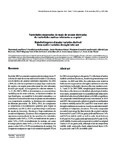
Please use this identifier to cite or link to this item:
http://ricaxcan.uaz.edu.mx/jspui/handle/20.500.11845/934Full metadata record
| DC Field | Value | Language |
|---|---|---|
| dc.contributor.other | 0000-0001-7861-4780 | es_ES |
| dc.contributor.other | https://orcid.org/0000-0002-3961-2608 | - |
| dc.contributor.other | https://orcid.org/0000-0001-7861-4780 | - |
| dc.coverage.spatial | México | es_ES |
| dc.creator | Luna Flores, Maximino | - |
| dc.creator | García Hernández, Serafín | - |
| dc.creator | Martínez Gómez, Javier | - |
| dc.creator | Luna Estrada, Maximino Gerardo | - |
| dc.creator | Lara Herrera, Alfredo | - |
| dc.creator | Villagrana Soto, Fidel | - |
| dc.creator | Cedeño Barceló, Félix del Jesús | - |
| dc.creator | Llamas Llamas, Jesús | - |
| dc.creator | Avelar Mejía, Jesús | - |
| dc.date.accessioned | 2019-04-08T18:25:44Z | - |
| dc.date.available | 2019-04-08T18:25:44Z | - |
| dc.date.issued | 2015-09 | - |
| dc.identifier | info:eu-repo/semantics/publishedVersion | es_ES |
| dc.identifier.issn | 2007-0934 | es_ES |
| dc.identifier.uri | http://ricaxcan.uaz.edu.mx/jspui/handle/20.500.11845/934 | - |
| dc.identifier.uri | https://doi.org/10.48779/sqpf-sr97 | - |
| dc.description | In 2005 a research process began in 27 collections of native rainfed corn from Zacatecas, in order to generate improved varieties. In 2005 and 2006, the collections were tested in field under drought and non-drought conditions to select the most tolerant to drought; chosen collection numbers were: 5, 7 and 23. In 2007-2009, morphological characteristics from these collections were identified, physiological studies were made, stomatal density was quantified and subjected to individual selection of inbred plants with full competition; six compounds with different precocity were formed. In 2010 and 2011, the compounds underwent genetic recombination to achieve stability and in 2012 and 2013 were tested under drought conditions in Zacatecas, Zacatecas and under rainfed conditions in Valparaiso, Zacatecas. Two early compounds exceeded on average the three tests to the original varieties between 9.6% and 12.9% in grain yield and between 7.6% and 9.6% in stubble yield; as well as early check between 9.6% and 16.5% in grain yield and between 9.6% and 18.8% yield stubble. A semi-early compound exceeded the original variety 6.8% in grain yield, although it did not outperform stubble yield; semi-early check outperformed those 5.5% in grain yield and 8.8% in stubble yield. | es_ES |
| dc.description.abstract | En el año 2005 se comenzó un proceso de investigación en 27 colectas de maíz de secano nativas del estado de Zacatecas, con el objetivo de generar variedades mejoradas. En 2005 y 2006, las colectas se probaron en campo bajo condiciones de sequía y sin sequía, para seleccionar las más tolerantes al estrés por sequía; se escogieron las colectas número: 5, 7 y 23. De 2007 a 2009, se determinaron las características morfológicas de estas colectas, se hicieron estudios de tipo fisiológico, se cuantificó la densidad estomática y se sometieron a selección individual de plantas autofecundadas con competencia completa; se formaron seis compuestos de diferente precocidad. En 2010 y 2011, los compuestos se sometieron a recombinación genética para lograr su estabilidad y en 2012 y 2013 se probaron bajo condiciones de sequía en Zacatecas, Zacatecas y bajo condiciones de secano en Valparaíso, Zacatecas. Dos compuestos precoces superaron en promedio de las tres pruebas a las variedades originales entre 9.6% y 12.9% en rendimiento de grano y entre 7.6% y 9.6% en rendimiento de rastrojo; así como al testigo precoz entre 9.6% y 16.5% en rendimiento de grano y entre 9.6% y 18.8% en rendimiento de rastrojo. Un compuesto semiprecoz superó a la variedad original 6.8% en rendimiento de grano, aunque no lo superó en rendimiento de rastrojo; al testigo semiprecoz los superó 5.5% en rendimiento de grano y 8.8% en rendimiento de rastrojo. | es_ES |
| dc.language.iso | spa | es_ES |
| dc.publisher | Instituto Nacional de Investigaciones Forestales, Agrícolas y Pecuarias | es_ES |
| dc.relation.uri | generalPublic | es_ES |
| dc.rights | Atribución-NoComercial-CompartirIgual 3.0 Estados Unidos de América | * |
| dc.rights.uri | http://creativecommons.org/licenses/by-nc-sa/3.0/us/ | * |
| dc.source | Revista Mexicana de Ciencias Agrícolas Vol.6 Núm.7 28 de septiembre - 11 de noviembre, 2015 p. 1455-1466 | es_ES |
| dc.subject.classification | CIENCIAS AGROPECUARIAS Y BIOTECNOLOGIA [6] | es_ES |
| dc.subject.other | Zea mays L. | es_ES |
| dc.subject.other | resistencia a sequía | es_ES |
| dc.subject.other | selección individual | es_ES |
| dc.subject.other | variedades criollas | es_ES |
| dc.subject.other | drought resistance | es_ES |
| dc.subject.other | individual selection | es_ES |
| dc.subject.other | landraces | es_ES |
| dc.title | Variedades mejoradas de maíz de secano derivadas de variedades nativas tolerantes a sequía | es_ES |
| dc.title.alternative | Rainfed improved maize varieties derived from native varieties drought tolerant | es_ES |
| dc.type | info:eu-repo/semantics/article | es_ES |
| Appears in Collections: | *Documentos Académicos*-- UA de Agronomía | |
Files in This Item:
| File | Description | Size | Format | |
|---|---|---|---|---|
| Variedades mejoradas de maíz.pdf | 751,54 kB | Adobe PDF |  View/Open |
This item is licensed under a Creative Commons License
